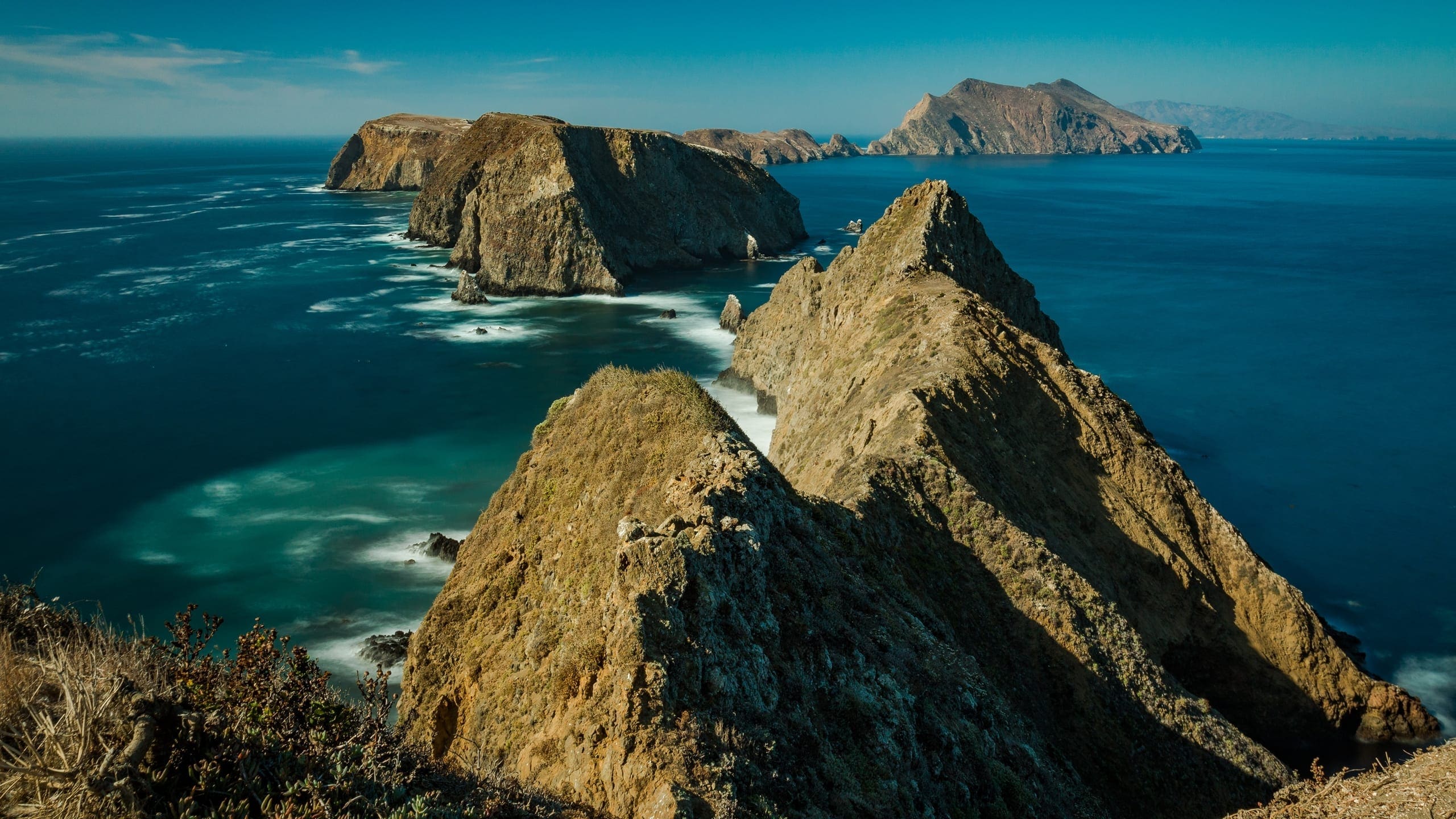About Channel Islands National Park
Located off the coast of southern California, the eight Channel Islands and waters of the Southern California Bight encompass a diverse and unique marine environment. Five of the islands—Anacapa, Santa Cruz, Santa Rosa, San Miguel, and Santa Barbara—and the submerged lands and waters within 1 nautical mile of each island, were designated by Congress as Channel Islands National Park on March 5, 1980 (Public Law [PL] 96-199; 16 USC 410ff). The park bridges two major biogeographical provinces within approximately 250,000 acres of land and sea, protecting a rich array of natural and cultural resources. A much larger area, approximately 1,400,000 acres of ocean, lies between the five islands.
The mild climate, with short wet winters, long dry summers, and extensive coastal fog is one of the best examples of the Mediterranean ecosystem in North America. Unique island species of plants and animals persist here, as do island plant communities. Nearly 10% of island plants exist only on these islands.
The nearby confluence of ocean currents swirling around the islands brings nutrients from cold ocean depths into warm sunlight, building one of the most productive marine environments on earth. Giant kelp forests, seagrass beds, rocky reefs, and submarine canyons in the park are populated with more than 1,000 species of fish, invertebrates, and algae. The park provides essential vital nesting and feeding grounds for more than 90% of the sea birds in southern California (some of which are very rare) on pristine sand beaches, rocky tidepools, and sheer cliffs. Twenty-six species of marine mammals (including blue whales) feed, transit, or raise their young in the park because they are near abundant food and are safe from disturbance.
The fact that the islands have never been connected to the mainland has greatly limited the number of species that have reached their shores. Isolation allowed plants and animals to evolve into new species and subspecies different in both their appearance and behavior from relatives on the mainland. The same small populations and limited island habitats that relegate many species to rarity also accelerate evolution of unique life forms. The park represents a wild remnant of coastal California that can be viewed and experienced as a standard for comparisons with other more altered parts of the region.
The park’s paleontological record provides evidence of the evolution of the island fauna and the effects on this fauna of human colonization. The Pleistocene paleontological record includes several extinct species, including the Columbian mammoth, island pygmy mammoth, flightless goose, two species of giant mouse, and vampire bat. It also contains the best representation of a Pleistocene marine avifauna on the Pacific Coast.
The archeology of the Channel Islands provides a unique opportunity to understand the historical ecology of Pacific Coast environments and the interaction of maritime peoples with dynamic coastal ecosystems. The natural abundance of the rich terrestrial resources and the surrounding sea has attracted humans to the islands for thousands of years. More than 2,500 archeological resources have been identified within the park boundaries, representing a continuous occupation spanning the entire human prehistory of North America. The oldest positively dated human remains in North America were unearthed on Santa Rosa Island. A site on San Miguel Island shows evidence of occupation as much as 13,000 years ago and has yielded the remnants of a small woven child’s sandal. These native people—the Island Chumash—relied on the sea for much of their sustenance and manufactured tools and trade items from shells and stones. These islands continue to hold meaning for today’s Chumash people. During the last 500 years, Spanish and other European explorers, otter hunters, ranchers, fishers, and the military have used island resources. Historic ranches, military structures, and more than 100 known shipwrecks remain as examples of California’s rich and diverse heritage.
Today nearly 20 million people live within 100 miles of the islands. The waters of the Santa Barbara Channel provide, as well as limit, public access to the islands. Each year thousands of scuba divers explore island reefs and kelp forests. Boaters find shelter in more than 100 secluded anchorages. Thousands of day visitors and campers enjoy island vistas, trails, sea caves, natural sounds, night skies, and tidepools. Researchers and educators find the island environments to be an accessible laboratory of unequalled quality.
Human activities over the last 13,000 years altered island and marine environments. The rate of change greatly accelerated over the past 300 years. The park’s waters once were one of the best places to fish in California. These fisheries, once thought to be inexhaustible, have not been sustainable under traditional management. Keystone species, such as the California sea otter, have been eliminated from park waters. Air and water pollution from nearby metropolitan and industrial developments threaten fragile island ecosystems. Ranching on the islands introduced both nonnative animals and nonnative plants, eliminated vegetative cover, and accelerated erosion.
The introduction of nonnative species to the Channel Islands has imperiled many of the park’s unique plants and animals. For more than three decades, it has been a goal of the park staff to control or eradicate nonnative species that threaten the viability of native island species and function of ecological processes. The park and partner agencies and organizations have achieved tremendous success eliminating invasive mammals from the islands and restoring populations of native species, including the recovery of the island fox and the reestablishment of bald eagles and peregrine falcons. Additional ecosystem restoration efforts are ongoing and will continue.
Source: Foundation Document – Channel Islands National Park
Fast Facts:
| Date the Park was Established: | March 5, 1980 |
| Park Area (as of 2019): | 249,561.00 acres (1,009.9 km2) |
| Recreational Visitors (2018 Total): | 366250 visitors |


